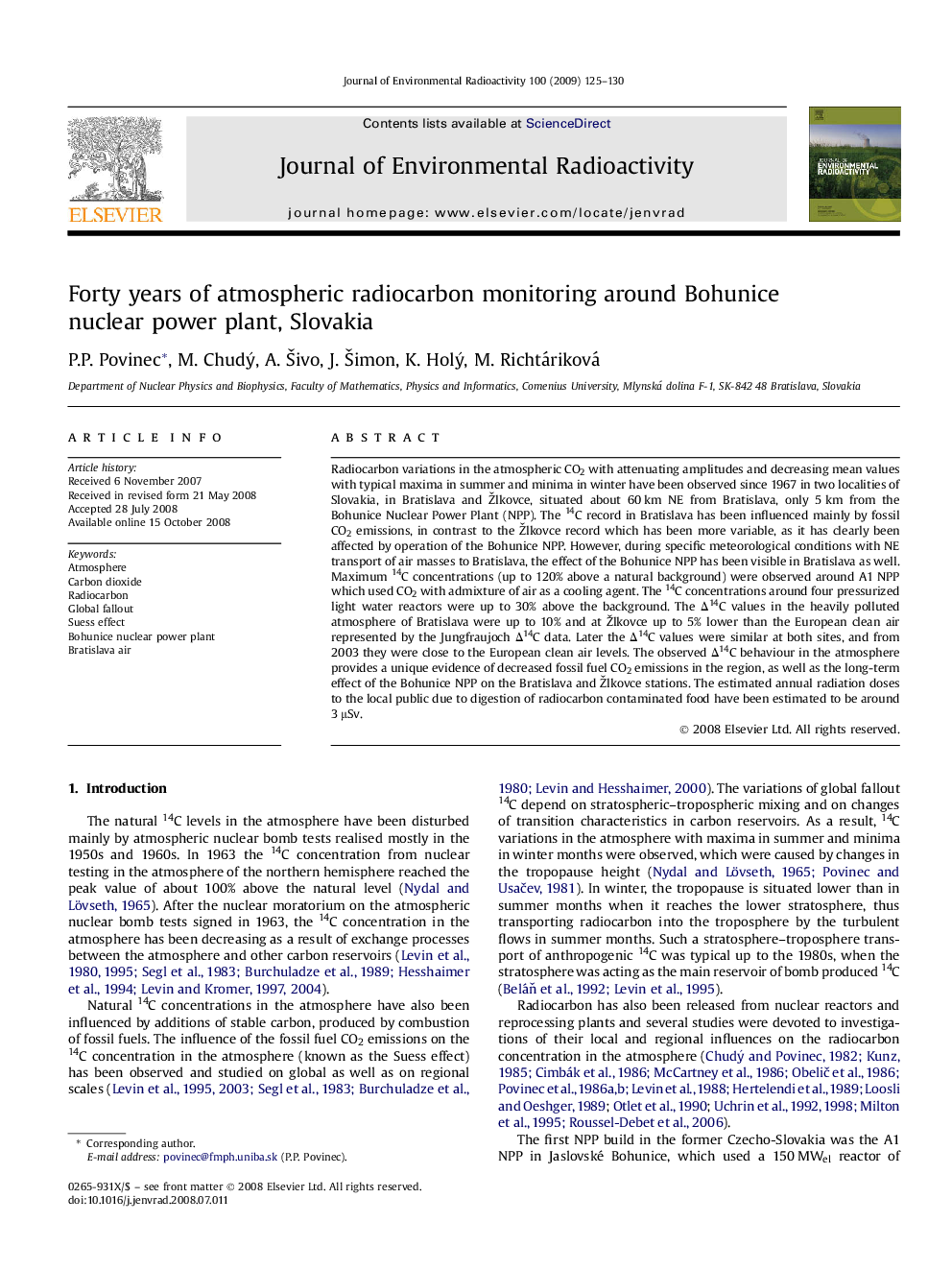| Article ID | Journal | Published Year | Pages | File Type |
|---|---|---|---|---|
| 1739075 | Journal of Environmental Radioactivity | 2009 | 6 Pages |
Radiocarbon variations in the atmospheric CO2 with attenuating amplitudes and decreasing mean values with typical maxima in summer and minima in winter have been observed since 1967 in two localities of Slovakia, in Bratislava and Žlkovce, situated about 60 km NE from Bratislava, only 5 km from the Bohunice Nuclear Power Plant (NPP). The 14C record in Bratislava has been influenced mainly by fossil CO2 emissions, in contrast to the Žlkovce record which has been more variable, as it has clearly been affected by operation of the Bohunice NPP. However, during specific meteorological conditions with NE transport of air masses to Bratislava, the effect of the Bohunice NPP has been visible in Bratislava as well. Maximum 14C concentrations (up to 120% above a natural background) were observed around A1 NPP which used CO2 with admixture of air as a cooling agent. The 14C concentrations around four pressurized light water reactors were up to 30% above the background. The Δ14C values in the heavily polluted atmosphere of Bratislava were up to 10% and at Žlkovce up to 5% lower than the European clean air represented by the Jungfraujoch Δ14C data. Later the Δ14C values were similar at both sites, and from 2003 they were close to the European clean air levels. The observed Δ14C behaviour in the atmosphere provides a unique evidence of decreased fossil fuel CO2 emissions in the region, as well as the long-term effect of the Bohunice NPP on the Bratislava and Žlkovce stations. The estimated annual radiation doses to the local public due to digestion of radiocarbon contaminated food have been estimated to be around 3 μSv.
